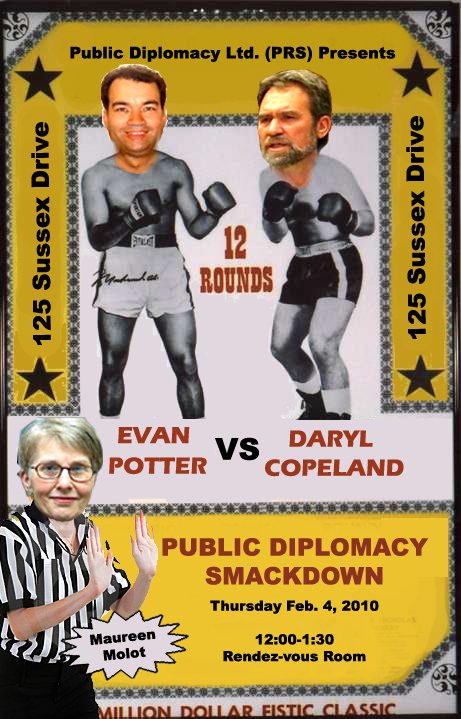In the wake of the London conference on Afghanistan last week, there has been much speculation about whether or not a page has been turned. Does the strategic balance now favour talking over fighting en route to the withdrawal of foreign troops?
In order to understand, frame and contextualize recent developments, it may be useful to highlight some of the essential differences, and perhaps especially several of the less appreciated ones, between the nature and agency of hard and soft power. In terms of international policy instruments, the former is associated principally with the armed forces, and the latter with diplomacy, in general, and public diplomacy, in particular.
When the two power sources and international policy instruments are compared, the obstacles and constraints to their effective combination may become clearer.
Following are some of the basic distinctions:
- Definitions. Hard power is about compelling your adversary to comply with your will through the threat or use of force. Soft power is about attracting your partner to share your goals through dialogue and exchange.
- Objectives. Hard power seeks to kill, capture, or defeat an enemy. Soft power seeks influence through understanding and the identification of common ground.
- Techniques. Hard power relies ultimately on sanctions and flows from the barrel of a gun. Soft power is rooted in meaningful exchange and the art of persuasion.
- Values. Hard power is macho, absolute, and zero sum. Soft power is supple, subtle, and win/win.
- Ethos. Hard power engenders fear, anguish and suspicion. Soft power flourishes in an atmosphere of confidence, trust and respect.
These distinctions between hard and soft power can become dis-junctures when placed in an institutional setting or applied in the field. That is, while significant enough in themselves, the disconnects are exacerbated by differences within and between the bureaucratic cultures of the military and, for example, foreign ministries or international organizations.
Hierarchy, obedience, and control are part of the DNA of military hard power; an institution designed primarily for fighting is not best-suited for talking.
The genome of soft power, of public diplomacy, in contrast, turns on relationships, on lateral connectivity and on the construction and maintenance of collaborative networks. These tasks are better left to diplomats, not soldiers, especially in a place such as Afghanistan, where the sheer complexity is staggering.
For most of its time in-country, however, NATO has been relying primarily on hard power. ISAF diplomats, particularly those working from PRTs outside of Kabul, spend much of their time inside heavily guarded compounds, venturing outside the wire mainly in armoured convoys, and not frequently or for protracted periods.This is the antithesis of guerrilla diplomacy, and does not position NATO representatives to effectively engage the population.
The issues sketched above touch on several of the highly problematic aspects inherent in the smart power formula, which seeks to combine hard and soft power.
There are also a number of questions and issues particular to Afghanistan which remain unaddressed.
If the presence of foreign troops in Afghanistan has come to be seen by significant elements of the population as that of an occupying force, does it not follow that the surge will only make matters worse?
With the highly decentralized, and far from monolithic Taliban by most accounts ascendent on the ground within Afghanistan at this time, are they likely to respond favourably to an invitation to talk, to negotiate in good faith, or to make the concessions necessary if any form of compromise is to prevail?
With the political popularity of the war slipping in most ISAF member states, would it not make more strategic sense for the Taliban simply to step back and wait until the majority of foreign forces depart?
Given Afghanistan’s long history as a graveyard of imperial ambitions, and after incurring – and imposing – such high human and economic costs, why did it take NATO planners eight years to arrive at this juncture?
Stability in Afghanistan, to the extent that it has ever been enjoyed, tends to feature a weak political centre governing lightly through complex and constantly shifting alliances with various powers in the periphery.
It is very likely that this pattern will re-assert itself. Whether or not that is achieved through a resumption of the civil war into which ISAF intevened on one side (the Northern Alliance, who for all intents and purposes had been defeated by the Taliban) or can be accomplished through the careful orchestration of some kind of peace remains to be seen.
Based on performance to date, skepticism seems warranted. When the history is written of this latest, sorry chapter in the long history of attempts on the part of Western powers to have their way with Afghanistan, it will be likely be judged to have been ineptly managed since the day the Taliban were driven from power. Throughout the interim period, Afghanistan has been allowed to swing like a pendulum, alternating back and forth from centre stage to sideshow in the Global War on Terror.
Under the circumstances of (yet another) failed foreign intervention, any attempt to combine hard and soft power in Afghanistan will necessarily be fraught, both morally and strategically.
On one hand, it is hard to imagine that NATO’s performance might worsen.
On the other, if one of the parties is headed for the exits and the other prepared to bide its time, the best that might be expected is a Vietnam style peace with honour which will provide a decent interval before the inevitable occurs.
Should that outcome eventuate, the really difficult questions will surely follow.

